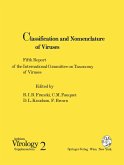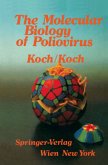This fully revised second edition leads students on an exploration of viruses by supporting interactive learning. All the major classes of viruses are covered, with separate chapters for their replication and expression strategies. Examples come from the most-studied and medically important viruses such as SARS-CoV-2, HIV and influenza.
Hinweis: Dieser Artikel kann nur an eine deutsche Lieferadresse ausgeliefert werden.
Hinweis: Dieser Artikel kann nur an eine deutsche Lieferadresse ausgeliefert werden.
Viruses interact with host cells in ways that uniquely reveal a great deal about general aspects of molecular and cellular structure and function. Molecular and Cellular Biology of Viruses leads students on an exploration of viruses by supporting engaging and interactive learning. All the major classes of viruses are covered, with separate chapters for their replication and expression strategies, and chapters for mechanisms such as attachment that are independent of the virus genome type. Specific cases drawn from primary literature foster student engagement. End-of-chapter questions focus on analysis and interpretation with answers being given at the back of the book. Examples come from the most-studied and medically important viruses such as HIV, influenza, and poliovirus. Plant viruses and bacteriophages are also included. There are chapters on the overall effect of viral infection on the host cell. Coverage of the immune system is focused on the interplay between host defenses and viruses, with a separate chapter on medical applications such as anti-viral drugs and vaccine development. The final chapter is on virus diversity and evolution, incorporating contemporary insights from metagenomic research.
Key features: Readable but rigorous coverage of the molecular and cellular biology of viruses; Molecular mechanisms of all major groups, including plant viruses and bacteriophages, illustrated by example; Host-pathogen interactions at the cellular and molecular level emphasized throughout; Medical implications and consequences included; Quality illustrations available to instructors; Extensive questions and answers for each chapter.
"Lostroh does an excellent job of balancing information with detail to produce a textbook that will be valuable to both instructors and students of introductory virology."
- Pranav Danthi, Indiana University, Bloomington, Indiana
Key features: Readable but rigorous coverage of the molecular and cellular biology of viruses; Molecular mechanisms of all major groups, including plant viruses and bacteriophages, illustrated by example; Host-pathogen interactions at the cellular and molecular level emphasized throughout; Medical implications and consequences included; Quality illustrations available to instructors; Extensive questions and answers for each chapter.
"Lostroh does an excellent job of balancing information with detail to produce a textbook that will be valuable to both instructors and students of introductory virology."
- Pranav Danthi, Indiana University, Bloomington, Indiana








